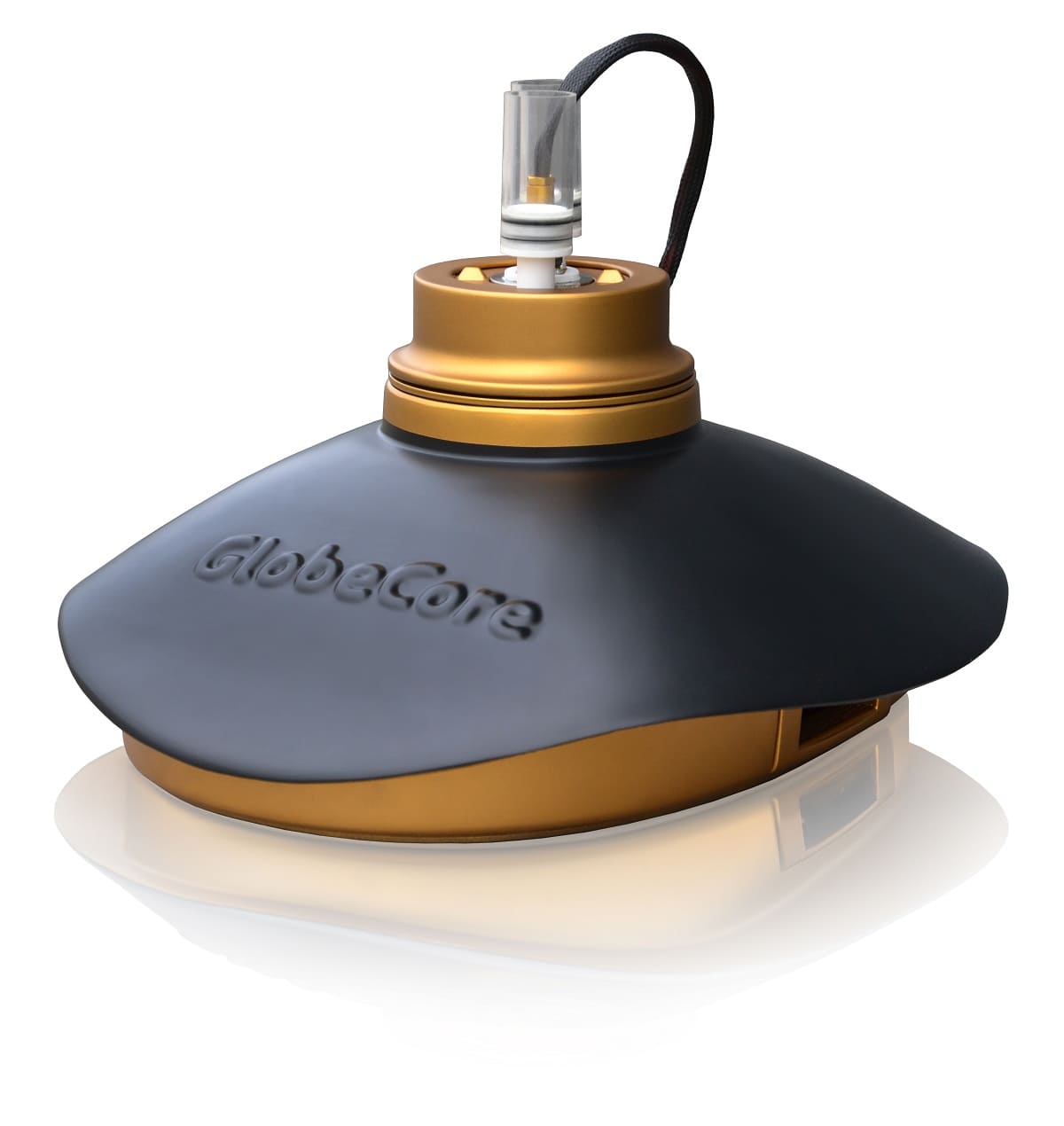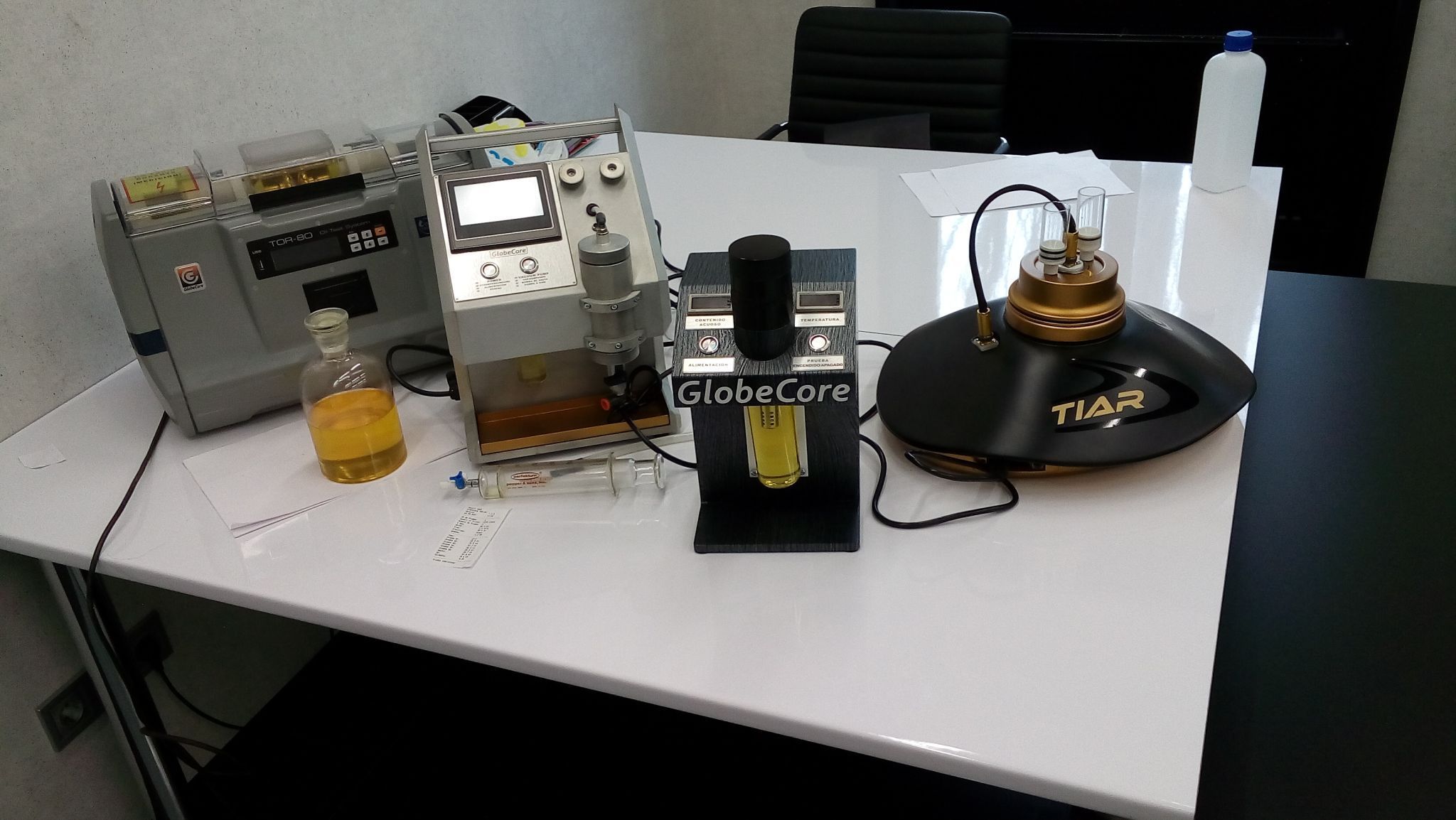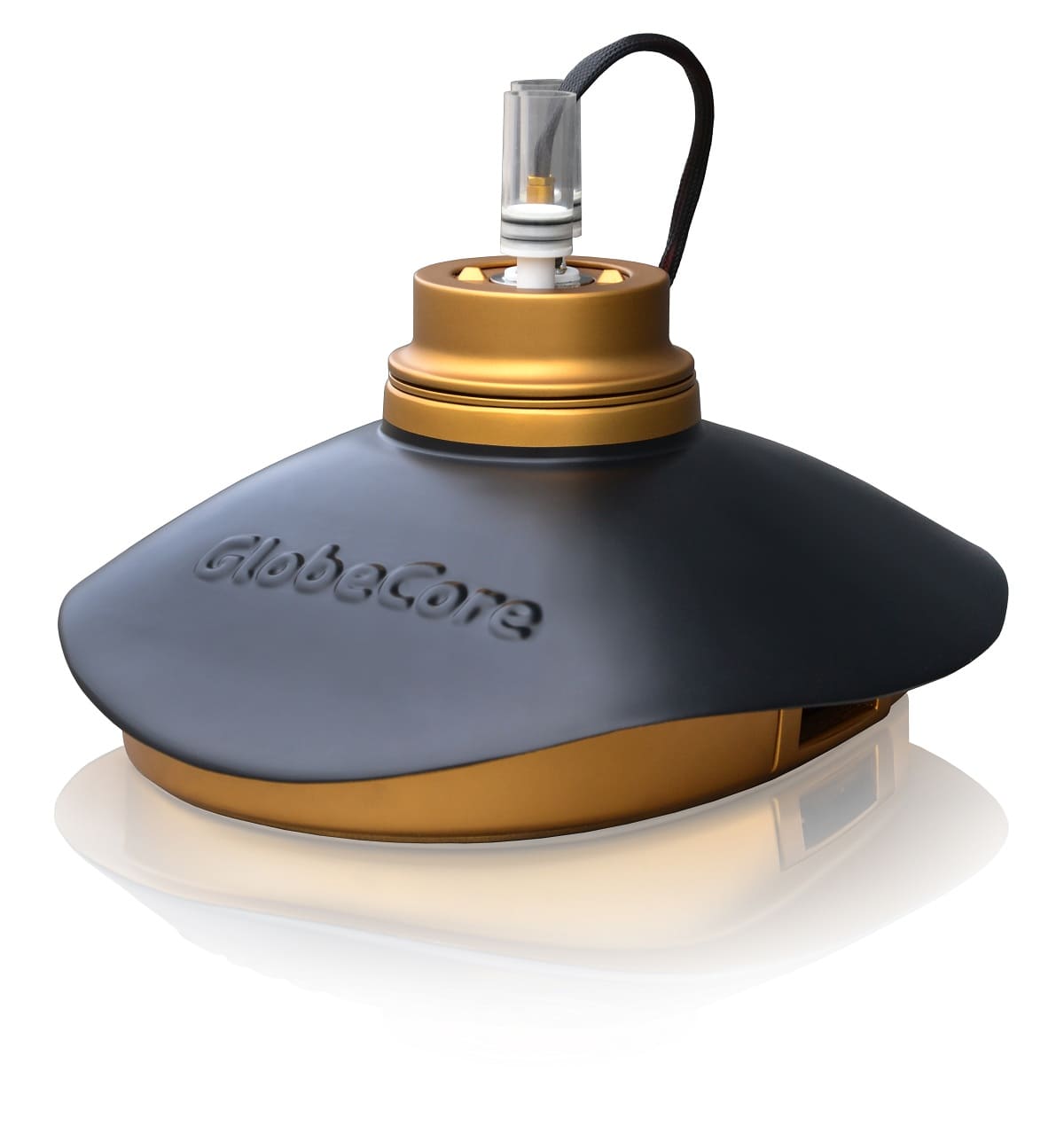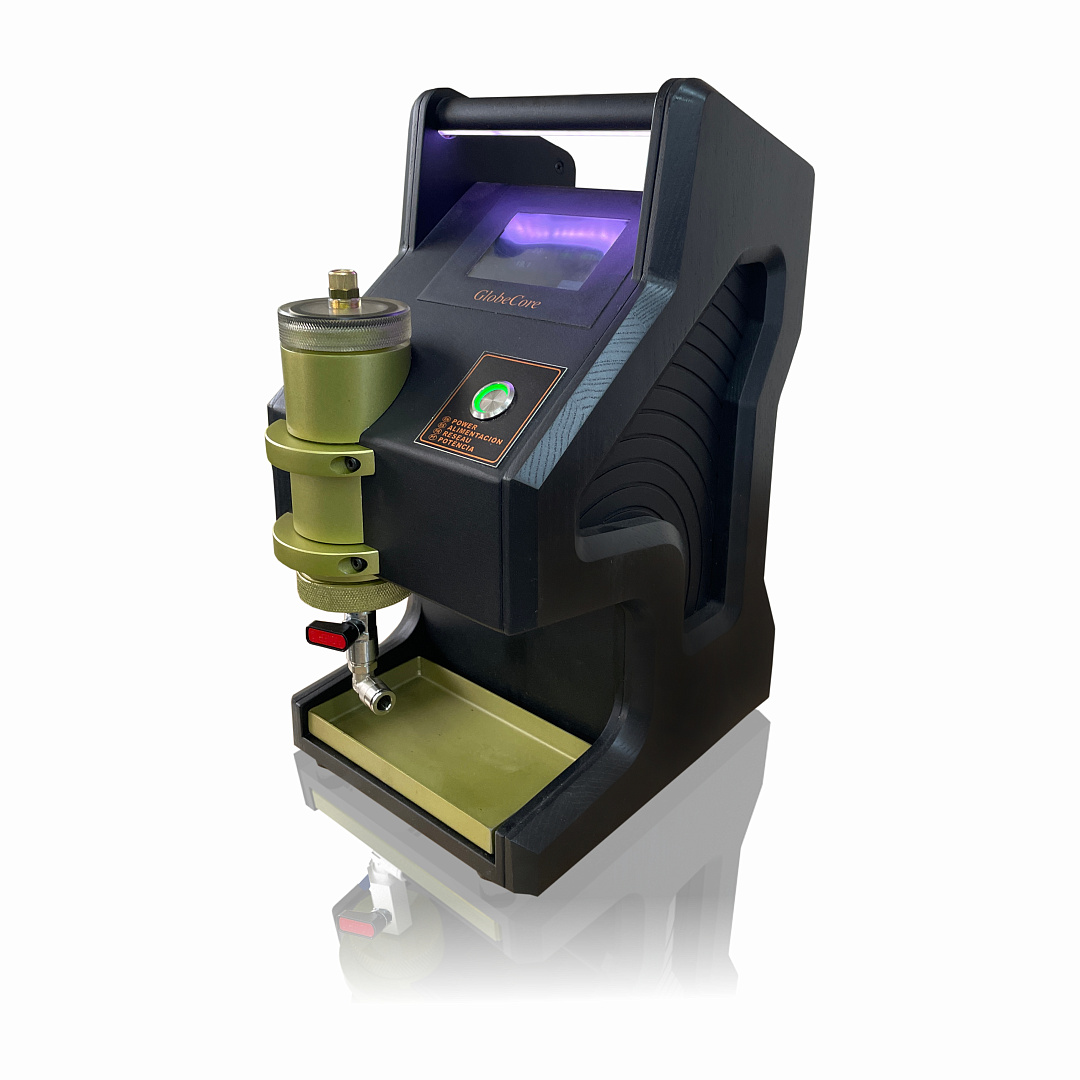The efficiency factor of a transformer never reaches 100%; in principle, just like with any other device. This is due to the fact that there occur power losses of transformers during operation. These losses take place in the copper conductors of the winding and in the magnetic core (magnetic circuit) made of steel. In this article, we will speak about another type of loss — the dielectric loss of transformer oil.
Causes of heating and overheating of transformers
If the steel loss is caused by eddy currents and cyclic magnetization reversal (hysterеsis), then the copper loss arises when the current passes through a copper conductor. The conductor has some resistance due to which there occurs a voltage drop and hence a power loss. Electrical energy is converted into heat — the copper conductor heats up. In order to prevent the transformer from overheating and to ensure the normal functioning thereof, the heat must be removed. Transformer oil is used for this task and performs the function of insulating the current-carrying transformer parts.
As long as the oil is in good condition and removes heat, the transformer will not be overheated. However, hhOas time goes by, the condition of oil deteriorates when exposed to high temperatures, high tension, wetness, contamination with mechanical impurities, and oxidative processes. The oil ages and performs its functions worse. Therefore, it is important to know how aged the oil is and how well it performs its tasks.
Transformer oil aging evaluation
Transformer oil change assessment is performed based on the results of taking samples and analyzing them in the laboratory, or using special instruments for express diagnostic evaluation. In this case, both a chemical evaluation of oil and an evaluation of its physical properties can be carried out: numerical color evaluation, oil breakdown testing, acid number measurement, determination of dielectric loss tangent, interfacial tension, water and gas content, hydrocarbon content, etc.
The degree of transformer oil oxidation and aging is characterized to various extents by the dielectric loss tangent, the acid number, the interfacial tension, the turbidity, and the color. During long-term operation, a considerable increase in the dielectric loss tangent is more indicative of aging, the acid number — of oxidation, and the turbidity — of colloidal aging of transformer oil.
What is meant by the dielectric loss and the dielectric permittivity of transformer oil?
If a dielectric is placed into an electric field, some of the field energy will be used to heat the dielectric. The dielectric loss means the power that is dissipated by an electric field as heat in a dielectric. The ability of dielectrics to dissipate electric field energy is estimated using the dielectric loss tangent.
Changes in the properties of oil even with a small amount of contaminants can be revealed by measured values of the dielectric loss tangent.
Furthermore, for the purposes of the properties of dielectrics in general and transformer oil in particular, the parameter such as the dielectric permittivity is used. It can be expressed as an absolute or relative value. The relative permittivity characterizes the properties of a dielectric and shows what fold the force of interaction between two electric charges in a dielectric medium is lower than that in a vacuum.
What range should the dielectric loss tangent of transformer oil be within?
What values of the dielectric loss tangent should be considered as those at which oil can continue to be used in a transformer? These values may differ from country to country; thus, over here, we provide approximate values:
- transformers, 110–150 kV — not more than 10% (at 70°С) and not more than 15% (at 90°С);
- transformers, 220–500 kV — not more than 7% (at 70°С) and not more than 10% (at 90°С);
- transformers, 750 kV — not more than 3% (at 70°С) and not more than 5% (at 90°С).
Influence of various impurities on the dielectric loss of transformer oil
Dielectric loss increases due to the presence of the following substances in oil:
- asphalt-resin substances;
- soaps;
- water.
Acids do not enhance the dielectric loss of oil at room temperature. However, as the temperature rises, the dielectric loss increases, and the higher the acid number of oil, the greater the extent of the increase.
Determination of dielectric loss tangent according to IEC 60247
As an example, let us discuss the determination of the dielectric loss tangent of transformer oil according to the method described in IEC 60247. It comprises the following steps:
- Since the dielectric loss tangent is sensitive to temperature, all measurements must be taken only after temperature equilibrium has been reached.
- In order to perform item 1, the measuring cell oil is heated to the required temperature. If heating is performed in non-automatic mode, it is recommended to start measuring only 10 minutes after reaching the set temperature ± 1 °С.
- Voltage is applied only during measurements. The applied voltage should create the electric field intensity in oil ranging from 0.03 to 1 kV/ mm. The voltage should change in a sinusoidal manner with the frequency of 40–62 Hz.
- Upon completion of initial measurements, the oil is drained from the measuring cell.
- Taking repeated measurements with the same settings and precautions as for the first batch of oil. The obtained tangent values shall not differ from one another by more than 0.0001 plus 25% of the higher value of the two determinations.
- If the condition of step 5 is met, the measurements are stopped. If the condition is unmet, the measurements are carried out until two consecutive values complying with the requirement have been obtained. They are taken as measurement results.
In addition to dielectric loss tangent measurements, IEC 60247 also regulates measuring the parameters such as the resistivity and the dielectric permittivity of oil. These indicators, both together and separately, provide information about the quality and the contamination degree of transformer oil. The dielectric permittivity is influenced by the large number of contaminants, while the dielectric loss tangent and the resistivity are strongly influenced by even the small number of contaminants.
v
Automatic measurement of dielectric loss tangent. TOR-3 tan delta tester
GlobeCore produces TOR-80 transformer oil breakdown analyzers, TOR-2 moisture and gas analyzers, and TOR-3 dielectric loss and dielectric strength tester for insulating oil.
TOR-3 tan delta tester — the main features and advantages:
- the operation of TOR-3 instrument is controlled using a computer by giving commands to perform certain actions, and then measurements are carried out in automatic mode with the result output to this computer;
- in order to reduce the duration of measurements, TOR-3 instrument uses a measuring cell into which the test oil is poured and a system for heating the cell “from the inside”. Owing to this, heating and temperature stabilization are performed at an accelerated rate. The instrument quickly attains specified characteristics and starts measuring the dielectric loss tangent and the dielectric permittivity in a few minutes;
- the measurement tolerance of the dielectric loss tangent does not exceed ±1%+0.00008, and that of dielectric permittivity — ±2%. High measurement accuracy and stability are achieved owing to new GlobeCore technologies used in developing the structure of a reference capacitor, as well as predetermined calibration of an empty measuring cell using a special software program;
- for operational convenience of TOR-3 instrument, the cell is not removed when proceeding to test the next samples. It is enough to give a command from the computer to open the oil drain valve into a special tray and to place a new sample into the cell thereafter;
- when the instrument is on, it can be easily moved on the desk or carried inside the laboratory which is achieved owing to compact arrangement of all electronic modules, light weight, and integration of handles into the housing;
- a microprocessor, a digital-to-analog converter, and a high-voltage amplifier contained in the instrument allow generating a test signal of needed shape and operating in a wide range of amplitudes. Therefore, TOR-3 is versatile and can be used to measure the dielectric loss tangent according to standards with different test voltage requirements;
- the operational safety of the instrument is achieved by making the housing and the top layer of the measuring cell cover from durable insulating material.
All the specifications of TOR-3 instrument can be found here. If you have further questions, you can ask them using some of the contact details contained in the appropriate website section.



 TOR-3 (TOR-3 SL) ...
TOR-3 (TOR-3 SL) ... TOR-1 Oil Moisture ...
TOR-1 Oil Moisture ... TOR-80 (TOR-80 LSL) ...
TOR-80 (TOR-80 LSL) ...